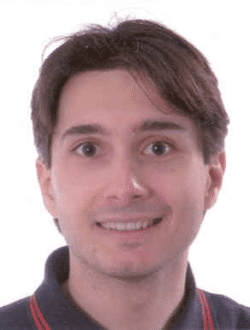Biography
- Ph.D. University of Paderborn, Germany 2010
- Infineon Technologies, mm-Wave Design Lead
- Research Interests: RF and mm-wave IC design, analog and mixed-signal circuits, radar and communication systems, biomedical electronics, mm-wave characterization techniques, chip/package/PCB co-design techniques and ESD co-design techniques.
- Author or co-author of over 60 technical papers and 11 patents.
- Awarded the Infineon Technologies AG High-Performance Award for Capacitive Testing Project
Presentations
Millimeter-Wave System and Circuit Design for Highly-Integrated Radar Transceivers
There is a growing interest in realization of highly-integrated radar transceivers operating at millimeter-wave (mm-wave) frequencies. The need for high-level integration is driven by the motivation for the products to be competitive on the market, this means implementing more features, offer high digital reconfigurability and enhanced RF functionality, consume a minimal chip area, dissipate less power and achieve a lower price. The trend in integrated mm-wave radar systems goes towards using increasingly higher operating frequencies. Frequencies above 100 GHz are very attractive for realizing multi-channel radar systems, due to possibility of module size reduction thanks to scaling of the antennas.
This talk focusses on system and circuit design considerations for highly-integrated radar transceivers in CMOS and SiGe HBT technologies. The speaker will first provide motivation for realization of radar sensors at mm-wave frequencies by showing the possible applications. Then, frequency band allocations for radar at mm-wave frequencies are discussed. Next, speaker will discuss system level consideration in detail and will present step-by-step system design steps for an integrated fast-chirp FMCW radar transceiver, such as level budget calculation, phase noise considerations, PLL linearity, design of the analog baseband. The system considerations will be systematically translated into specifications of circuit blocks (e.g. LNA, mixer, PA, VCO, analog baseband etc.) of the radar transceiver. Additionally, digital modulation techniques such as phase-modulated continuous-wave (PMCW) will be discussed and a systematic comparison with FMCW will be given. Next, technology-dependent considerations and challenges related to critical building blocks are discussed (e.g. phase noise, noise figure, operating frequency, routing density, digital baseband). Then, the speaker will present several design examples of integrated radar transceivers operating at V-band and D-band and will discuss the circuit architectures. The talk is rounded out by a vision on novel modulation techniques and trends in MIMO radar array realizations.
